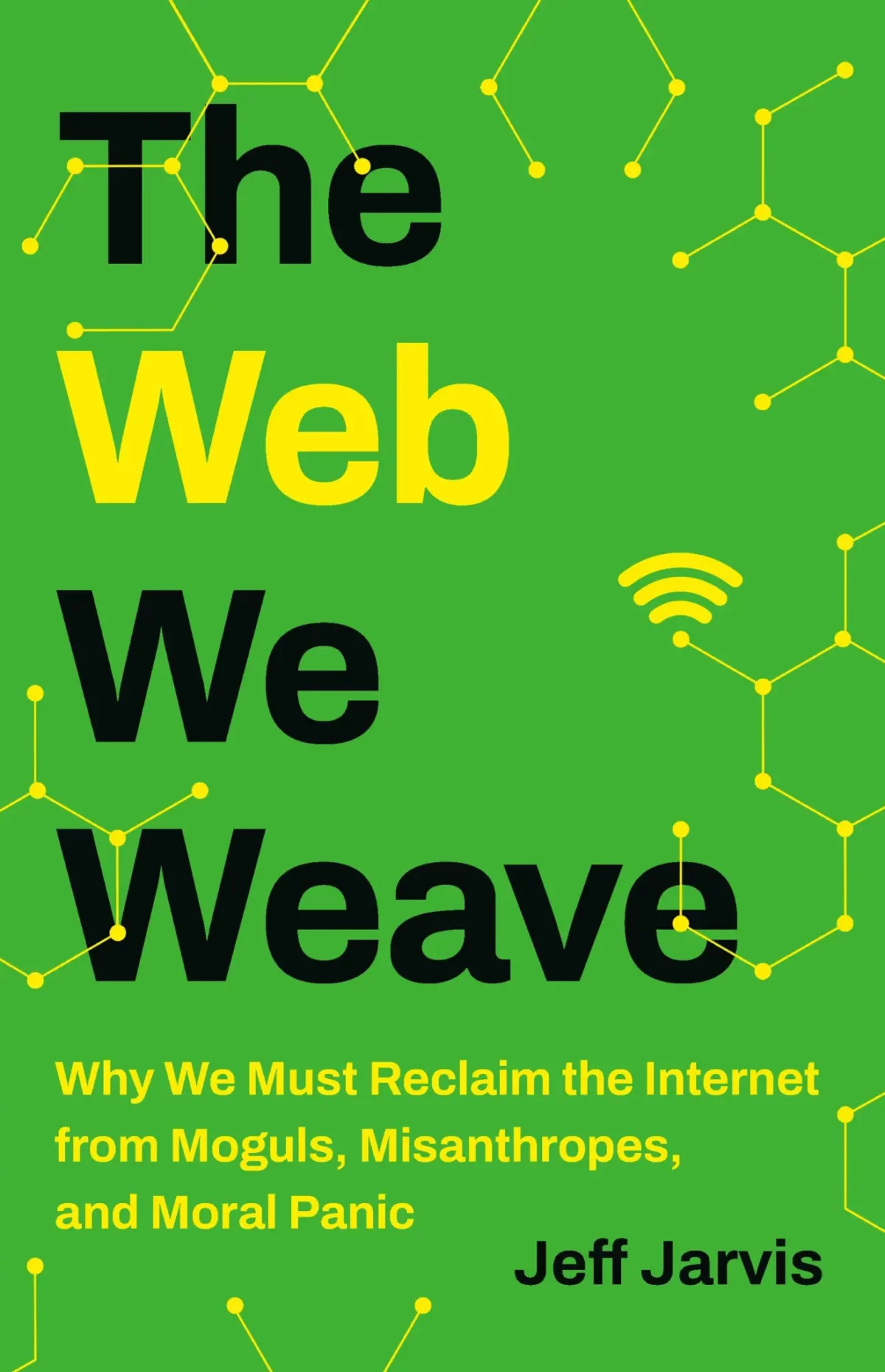The Web We Weave
By Jeff Jarvis
Basic Books
ISBN: 9781541604124
Sometime in the very early 1990s, someone came up to me at a conference and told me I should read the work of Robert McChesney. When I followed the instruction, I found a history of how radio and TV started as educational media and wound up commercially controlled. Ever since, this is the lens through which I’ve watched the Internet develop: how do we keep the Internet from following that same path? If all you look at is the last 30 years of web development, you might think we can’t.
A similar mission animates retired CUNY professor Jeff Jarvis in his latest book, The Web We Weave. In it, among other things, he advocates reanimating the open web by reviving the blogs many abandoned when Twitter came along and embracing other forms of citizen media. Phenomena such as disinformation, misinformation, and other harms attributed to social media, he writes, have precursor moral panics: novels, comic books, radio, TV, all were once new media whose evils older generations fretted about. (For my parents, it was comic books, which they completely banned while ignoring the hours of TV I watched.) With that past in mind, much of today’s online harms regulation leaves him skeptical.
As a media professor, Jarvis is interested in the broad sweep of history, setting social media into the context that began with the invention of the printing press. That has its benefits when it comes to later chapters where he’s making policy recommendations on what to regulate and how. Jarvis is emphatically a free-speech advocate.
Among his recommendations are those such advocates typically support: users should be empowered, educated, and taught to take responsibility, and we should develop business models that support good speech. Regulation, he writes, should include the following elements: transparency, accountability, disclosure, redress, and behavior rather than content.
On the other hand, Jarvis is emphatically not a technical or design expert, and therefore has little to say about the impact on user behavior of technical design decisions. Some things we know are constants. For example, the willingness of (fully identified) online communicators to attack each other was noted as long ago as the 1980s, when Sara Kiesler studied the first corporate mailing lists.
Others, however, are not. Those developing Mastodon, for example, deliberately chose not to implement the ability to quote and comment on a post because they believed that feature fostered abuse and pile-ons. Similarly, Lawrence Lessig pointed out in 1999 in Code and Other Laws of Cyberspae (PDF) that you couldn’t foment a revolution using AOL chatrooms because they had a limit of 23 simultaneous users.
Understanding the impact of technical decisions requires experience, experimentation, and, above all, time. If you doubt this, read Mike Masnick’s series at Techdirt on Elon Musk’s takeover and destruction of Twitter. His changes to the verification system alone have undermined the ability to understand who’s posting and decide how trustworthy their information is.
Jarvis goes on to suggest we should rediscover human scale and mutual obligation, both crucial as the covid pandemic progressed. The money will always favor mass scale. But we don’t have to go that way.
